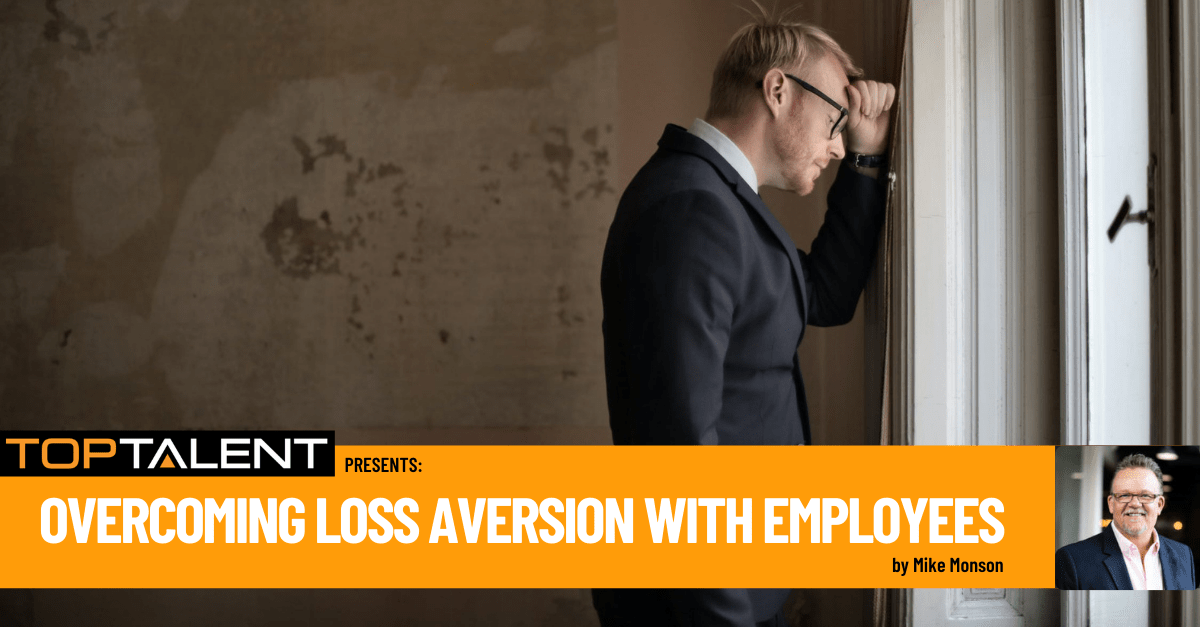Imagine this…a colleague offers to flip a coin and give you $20 if it lands on heads. If it lands on tails, you give him $20. Would you accept that bet? For most of us, the answer is no. Behavioral science experts Amos Tversky and Daniel Kahneman performed an experiment that resulted in a clear example of human bias towards avoiding losses. The experiment involved asking people if they would accept a bet based on the flip of a coin. If the coin came up tails, the person would lose $100, and if it came up heads they would win $200. The results of the experiment showed that on average people needed to gain about twice as much as they were willing to lose in order to proceed forward with the bet. This tendency reflects loss aversion. The reality is that losses generally have a much larger psychological impact than gains of the same size.
You likely experience this phenomenon daily. Have you ever purchased something knowing you’d likely return it, but the longer you keep it the more attached you got? Sending the item back now feels like a loss. The longer we’ve waited to be seated at a restaurant, the harder it becomes to leave, as it feels as if the time we’ve invested would then be lost. The more we try to fit a new couch through a too-narrow entryway, the less inclined we are to give up and accept that we need a smaller couch, and the more steadfast we become in making it fit. It seems that sometimes we will persist with a course of action long after it is rational to do so. Many of us feel trapped by commitment.
So how does this apply to the workplace?
When it comes to evaluating employee performance, the judgment of leaders is clouded. We double down with those we’ve invested time with that continue to underperform.
“B” and “C” Players
A less enjoyable component of management is the act of working with and coaching the perpetual underperformers. Every department has them and every leader has struggled with them. They are the few who we try to encourage, train, and hope that will change will come, but repeat an endless cycle of performance management and frustration.
We all recognize “A” Players and steady “B” performers. They are able to balance their work and personal lives while still performing a significant amount of tasks that need to be done. They stay in their lane, don’t require a great deal of attention, and get the job done.
“C” Players sometimes make up the smallest segment of the team yet require the most time and attention. They are the employees with a constant litany of excuses and the workload either gets passed to someone else or delayed altogether. They walk the fine line between “good enough to get by” and “fireable offense worthy of termination.” They are granted continual employment primarily because the act of hiring, training, and managing someone you don’t know is sometimes more intimidating than continuing to deal with the perpetual issues what you know.
So what can we do to fix this?
Stop Doubling Down
It’s time to step away from the fear of losing $100 and focus on winning $200. The obvious unintended consequence of having a seat filled with an underperformer is having it not filled by a significant contributor. What rarely is considered is the impact on those who are current significant contributors. Nothing is more frustrating than having your own success consistently hampered by another person’s incompetence. If the majority of your team is working hard, producing great results with great collaboration, what message are you sending by supporting the 10 percent who are doing the opposite? How long do “varsity players” want to be surrounded by sub-par athletes?
Beyond performance issues, it is likely time to upgrade when:
- The individual is the central cause of office drama
- Co-workers (or possibly worse, clients) have taken note of the incompetence
- They have an apathetic attitude
- They ignore actionable feedback
- They handles emotions poorly
- You spend more than ten minutes a week, week after week, dealing with issues created by the employee
Toxic Workers, a Harvard Business School study of more than 60,000 employees found that “a superstar performer–one that models desired values and deliver consistent performance” brings in more than $5,300 in cost savings to a company. Avoiding a toxic hire, or letting one go quickly, delivers $12,500 in cost savings.
Sometimes, it truly is best to return the item, leave the overcrowded restaurant, or succumb to a smaller couch. Instead of experiencing a loss, you might actually gain the improved morale of the entire workforce. Instead of experiencing a feeling of loss over time invested, you might actually gain more time to invest in those worth investing in. Instead of feeling the loss of an employee, you might actually gain a key contributor you would not have otherwise hired. Make the right decision today!
About Us
With over 90 years of Logistics experience, Top Talent is a recognized leader in Talent Acquisition for Logistics, Transportation, and Supply Chain., Let us put our team to work for you. To learn more about successful strategies for getting those impact players and game-changers on your team, reach out to us today.
– Michael Monson
Top Talent
President and CEO
Email: mike@toptalentllc.com
